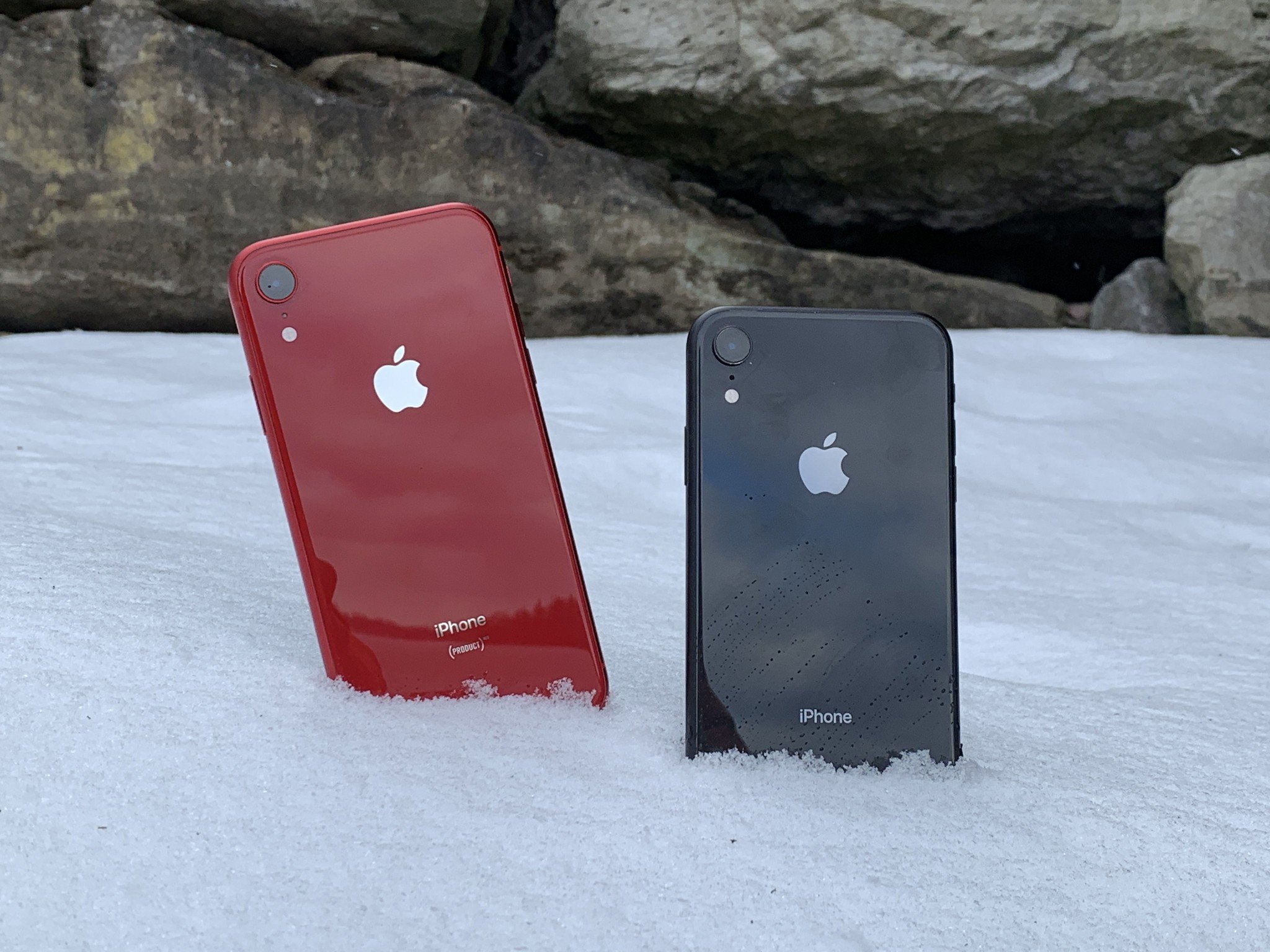Why I Chose the iPhone XR over the iPhone XS Max.
I've always had an affinity for the iPhone 5C. When it debuted in 2013, I was enamored by the device for how it looked and how it felt. The bright colors were cool, and to this day, the 5C remains the best-feeling iPhone ever made in my opinion. And yet, I didn't buy one; I opted for the nerdier, pricier iPhone 5S. While I greatly enjoyed the 5S, particularly for the advent of Touch ID, I had a lingering sense of buyer's remorse. The 5S clearly was the better device, but the 5C was more fun despite being stuffed internally with year-old guts. I missed the "fun" factor of the latter, which was all about style. And colorful iPhones are absolutely fun.
Aesthetically speaking, the iPhone XR is very much the spiritual succesor to the 5C.
Aesthetically speaking, the new iPhone XR is very much the spiritual successor to the 5C: it's brightly colored and fun. Where the XR trumps the 5C is that the former is an all-new phone. Apple SVP of Worldwide Marketing Phil Schiller made a concerted effort at September's press event to tout the XR containing the same A12 Bionic chip in the XS line, the same Face ID system, and the same gesture-based user experience of the X-class iPhones (Tap to Wake, no Home button, etc). All these features wrapped in a beautiful industrial design that's a cross between the iPhone X and iPhone 8. In other words, the XR is no chump; it is a splendid device.
Unlike the 5C, I jumped at the iPhone XR. I used the iPhone XS Max for a few weeks and reviewed it, but was so excited for my blue iPhone that I pre-ordered one instead of going with the XS Max. In truth, the color was the deciding factor for me. I readily acknowledge the trade-offs I'm making by choosing the "lesser" iPhone, but I don't regret it one iota. The iPhone XR is a terrific device, spec-wise, but the fact I have a blue iPhone delights me to no end. For the first time, I don't have the "best" iPhone available, and I don't care. The XR simply is more fun, and I love it.
Testing the Tweener
At 6.1 inches, the iPhone XR sits in between the iPhone XS (5.8") and the iPhone XS Max (6.5"). It is not a small phone, but in my usage, it is much smaller than the XS Max. In fact, the XR feels more akin to the XS in my hand; surprisingly, I can comfortably hold it one-handed to scroll through emails or read my Twitter timeline.
In terms of accessibility, this is a win for me. In my hand and in my pocket, the XR is more comfortable than the XS Max. The longer I have it, the more convinced I am that the XR is the "Goldilocks iPhone." Which is to say, it hits the sweet spot of screen size and ergonomics that is really appealing. For many disabled people, these attributes aren't insignificant—if you're someone who wants a "balanced" phone, the XR is a smart choice. Your mileage may vary, but as a physical object, I believe the XR makes the right compromises that neatly align with the functional trade-offs regarding the camera and so on. It's an all-around winner in my book.
Liking Liquid Retina
The nerdy side of me loves geeking out over the XS line's OLED display and pixel density. The XR display is what Apple calls "Liquid Retina," the same technology in the new iPad Pros. It is LCD instead of OLED, which means it isn't as bright nor does it have deep blacks. And the LCD's backlight requires a thicker bezel bordering the screen. By all objective measures, the XR's screen is not as good as that of the XS.
And yet, the nitty-gritty technical details mean little in practice. As a person with low vision, I literally cannot discern any meaningful difference between the XR and XS displays. I still have my XS review units, however, and I can tell a difference in a side by side comparison. In isolation, though, it doesn't matter. Apple calls the Liquid Retina display "the most advanced LCD in the industry," and it is indeed great. Text is razor-sharp, colors pop, and the screen is plenty bright (maximum brightness is a must for me) for my needs. I don't feel as if I'm lacking anything.
Whither 3D Touch?
When I tweeted my first impressions of the XR, I said I didn't miss 3D Touch terribly much. That's still mostly true, but there are a few places across the system where I miss it dearly. I'm reminded of how accessible 3D Touch makes iOS, despite how maligned it is by many in the Apple community of writers and developers.
There are two instances where the XR's "Haptic Touch" feature isn't as useful as 3D Touch. One is when I see text messages on the lock screen, I can't press firmly on the notification to expand it so I can read and reply. I have to swipe left and tap View first. This is not an enormous amount of work for me, but 3D Touch made it less so all the while expediting the process. On the XR, I have to work a little bit harder.
The XR user experience is not made demonstrably worse without 3D Touch.
Another example is the lack of Quick Actions on app icons. On every iPhone I've used since 3D Touch debuted with the iPhone 6S, I've been able to press on Messages to access my most recent iMessage threads or my favorite contacts on the Phone app. On the XR, pressing firmly on an icon does nothing but invoke "jiggle mode" for deleting or moving apps. As with the lock screen, 3D Touch makes these actions more easily accessible. Again, I have to work a bit harder on my XR.
In a nutshell, the bull case for 3D Touch and accessibility—and the MacBook Pro's Touch Bar, for that matter—is similar to that of Shortcuts and accessibility. What this means is both technologies consolidate multi-step tasks into a single step. For example, instead of tapping Messages, finding the thread, tapping it, then tapping down by the keyboard to compose a message, 3D Touch allows you to jump right in with a single tap. This is important for many disabled people, myself included, as it alleviates common points of friction related to visual and motor energy.
In his review, The Verge's Nilay Patel says Apple told him Haptic Touch will be enhanced over time to incorporate more of 3D Touch's functionality, which is good. In the meantime, I can absolutely survive without 3D Touch. While I miss Quick Actions and using Peek & Pop in Mail, the XR user experience is not made demonstrably worse without 3D Touch. It's fine, but it goes to show how much of a fan I am. Like the Touch Bar, 3D Touch is far from useless or gimmicky to me.
The Bottom Line
The fact I chose the iPhone XR over the XS Max is, I think, a telling endorsement of the product. My job is writing about these things, and I chose the XR primarily for the color. I knew the sacrifices I'd be making, but I did it anyway and I don't regret my decision. Save for 3D Touch, the iPhone XR is as accessible as any other iPhone I've ever used. I love my blue phone, and cannot wait for next year's revision.
Steven is a freelance tech writer who specializes in iOS Accessibility. He also writes at Steven's Blog and co-hosts the @accessibleshow podcast. Lover of sports.


